Ruth Mandl and Bobby Johnston’s Brooklyn architecture firm, CO Adaptive, specializes in environmentally responsible, future-resilient retrofits, including their own 1889 Bed-Stuy brownstone that they converted into a passive house. The gut renovation followed a set of building standards for ultra-energy efficiency—their power bills are literally zero and their indoor temperature never fluctuates.
The project enabled the two to reinvent their historic house as a bright oasis tailored to their needs: the pegboard rising over their kitchen sink is the cover image of Remodelista: The Low-Impact Home, and in the book, we detail the couple’s kitchen solutions. Today, we’re exploring three ways the architects were able to incorporate additional hardworking elements just off the kitchen: a laundry closet, utility closets, and a powder room. Scroll to the end for a Before shot and a floor plan that shows how they origamied it all into a very tight space.
Photography by Matthew Williams for Remodelista, unless noted.
 Above: The architects reinvented the look of the interior while preserving key historic elements, such as the stair newel and the ornate archway between the living room and kitchen. The kitchen and hall cabinets are Ikea basics fronted with painted oak doors and drawers from Reform’s Basis line. Photograph by Peter Dressel, courtesy of CO-Adaptive.
Above: The architects reinvented the look of the interior while preserving key historic elements, such as the stair newel and the ornate archway between the living room and kitchen. The kitchen and hall cabinets are Ikea basics fronted with painted oak doors and drawers from Reform’s Basis line. Photograph by Peter Dressel, courtesy of CO-Adaptive.
 Above: Ruth, Bobby, and their daughter can go barefoot in the house without a picking up hint of dirt—the air is purified and little from the outdoors encroaches inside the airtight house.
Above: Ruth, Bobby, and their daughter can go barefoot in the house without a picking up hint of dirt—the air is purified and little from the outdoors encroaches inside the airtight house.
The Laundry Nook
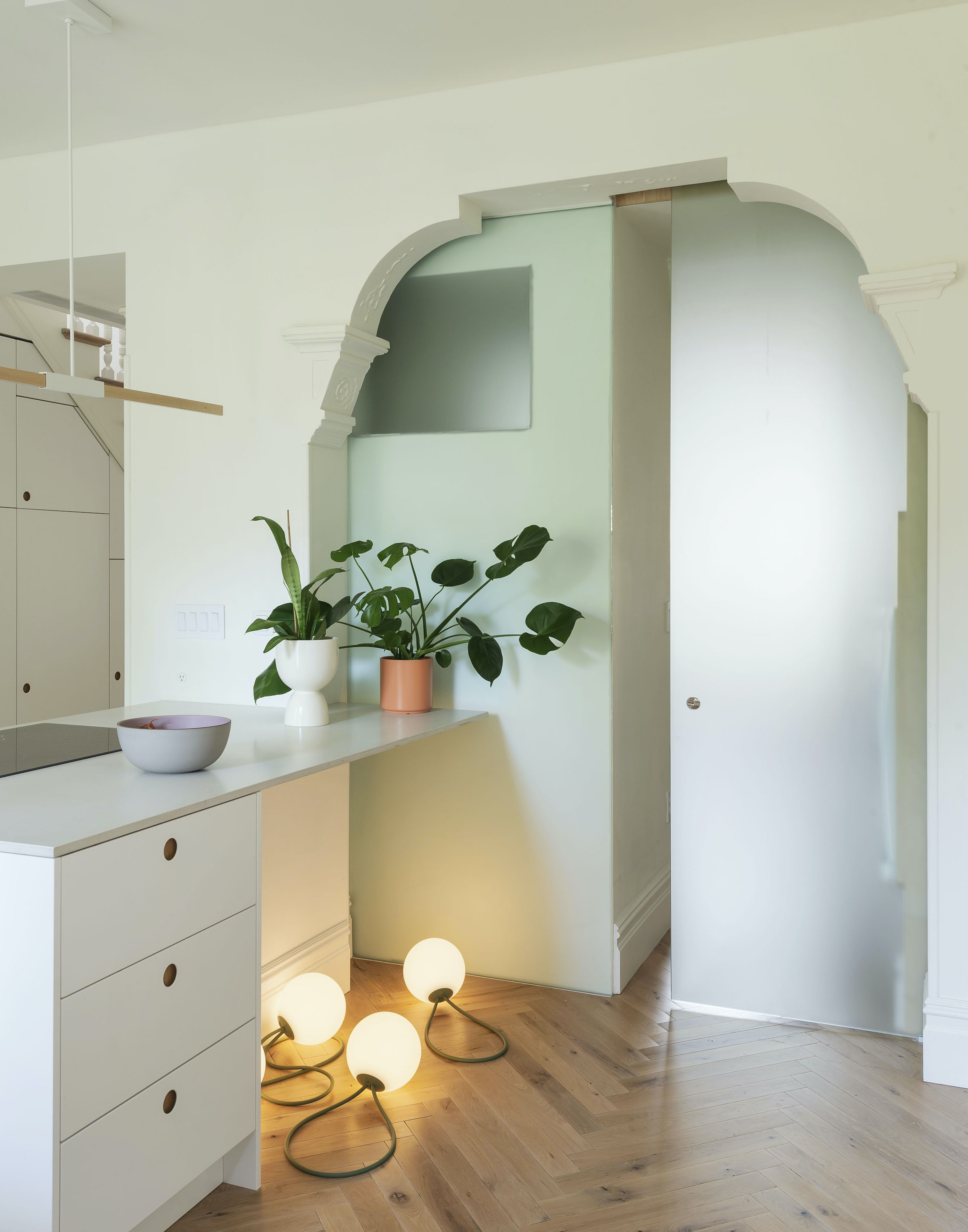 Above: A frosted glass sliding door partitions off the laundry area. The adjacent interior window introduces light to the powder room. The lights on the floor are cordless, rechargeable Fat Boy Bolleke LED Indoor/Outdoor Lanterns that hang in the backyard.
Above: A frosted glass sliding door partitions off the laundry area. The adjacent interior window introduces light to the powder room. The lights on the floor are cordless, rechargeable Fat Boy Bolleke LED Indoor/Outdoor Lanterns that hang in the backyard.
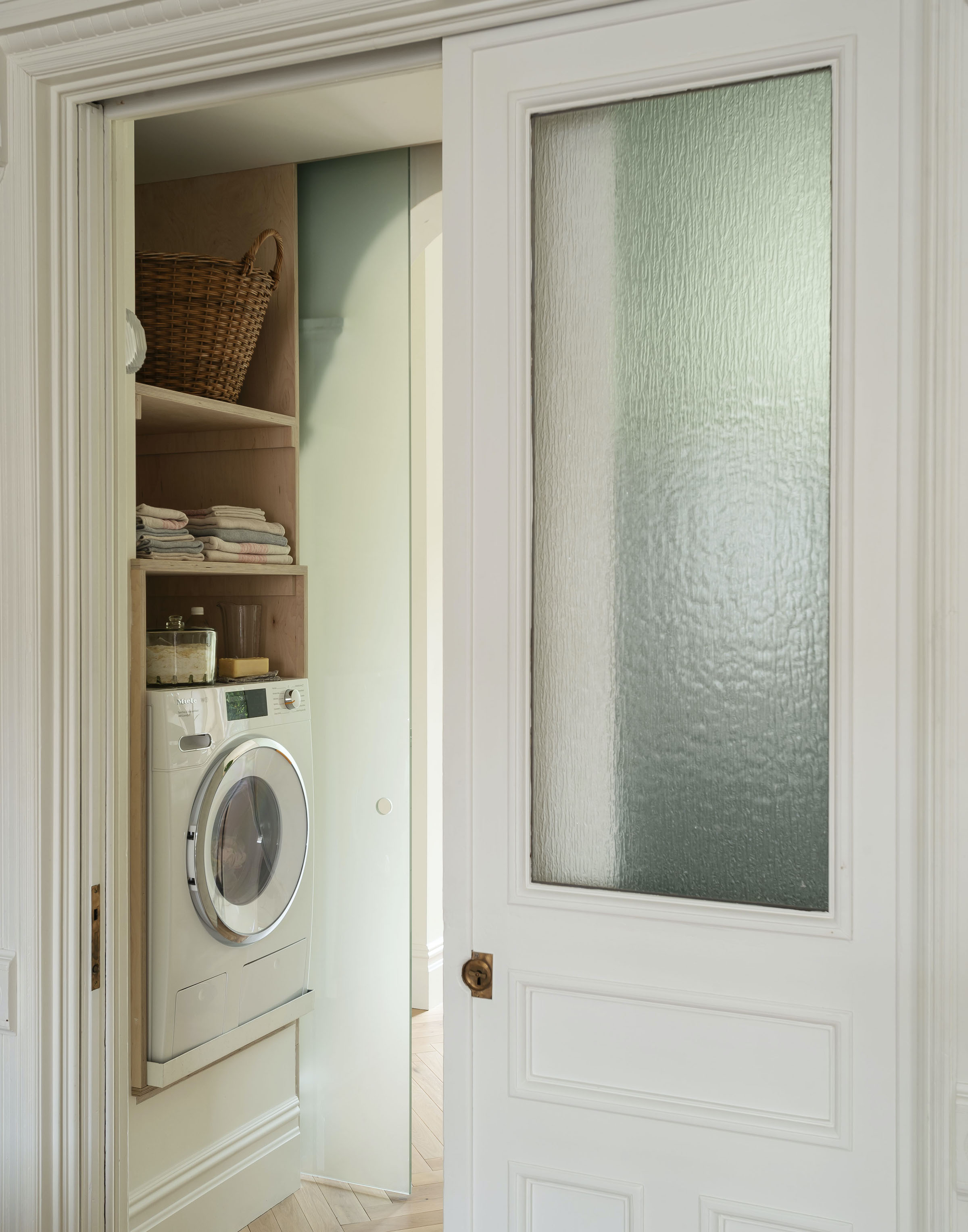 Above: “We fit our laundry and powder room into what was previously an interstitial space with small closets between the living and dining room. It had pocket doors to the living room and the plaster archway to the dining room side, both of which we kept. The front-loader washing machine is by Miele, and highly recommended by the couple. They opted not to have a dryer: “I grew up without one,” explains Ruth, who spent her childhood in Vienna. “I’m very used to hanging all our laundry—outside in the spring, summer, and fall. Not having a dryer saves significantly on our energy usage and air drying is much better for the clothes: they last longer.”
Above: “We fit our laundry and powder room into what was previously an interstitial space with small closets between the living and dining room. It had pocket doors to the living room and the plaster archway to the dining room side, both of which we kept. The front-loader washing machine is by Miele, and highly recommended by the couple. They opted not to have a dryer: “I grew up without one,” explains Ruth, who spent her childhood in Vienna. “I’m very used to hanging all our laundry—outside in the spring, summer, and fall. Not having a dryer saves significantly on our energy usage and air drying is much better for the clothes: they last longer.”
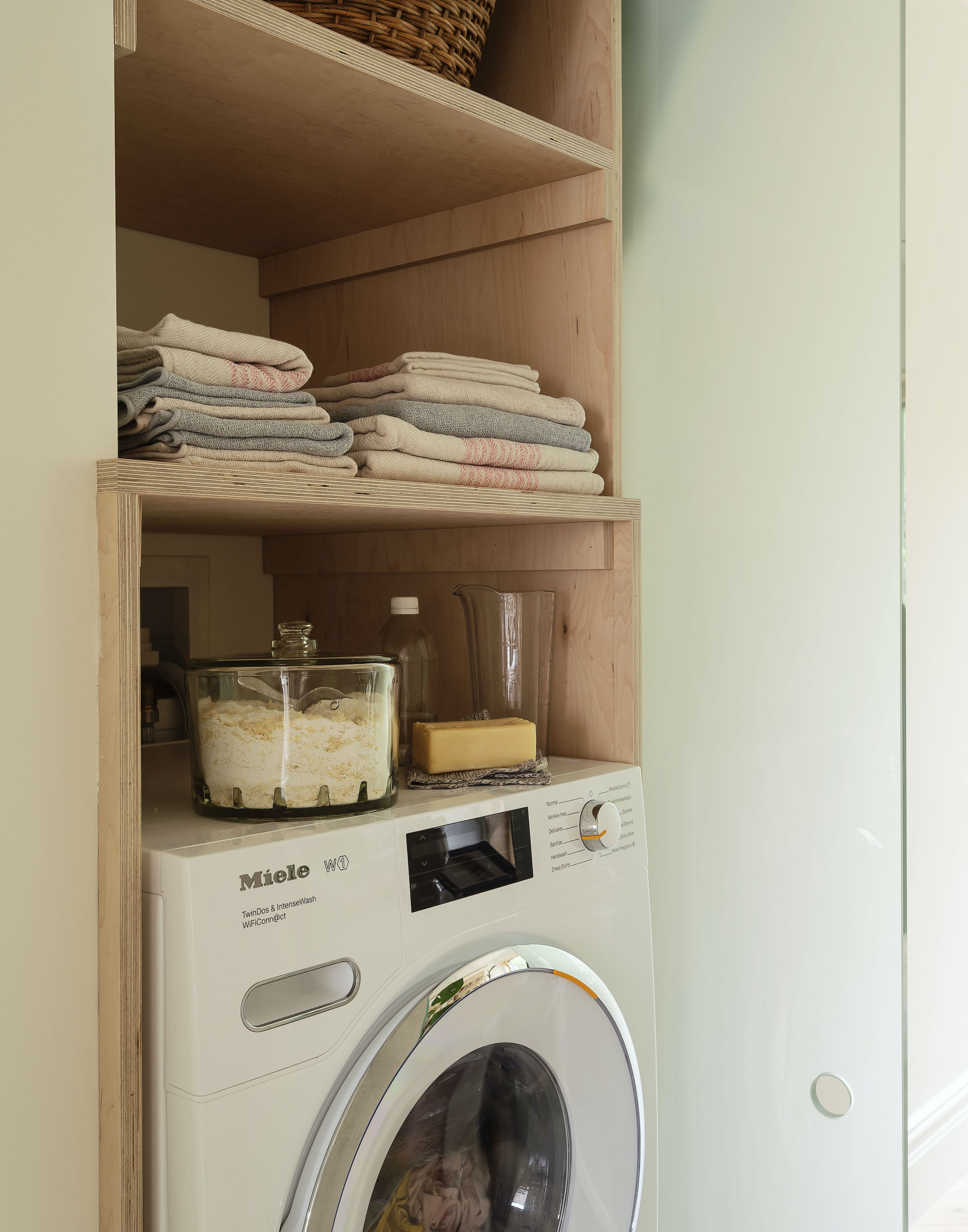 Above: In lieu of a dryer, there’s ample overhead storage. The solid-colored Re.Lana towels by Kontex are composed of 50 percent recycled cotton and 50 percent organic cotton. The striped towels are Flax Line Organics from Rikumo.
Above: In lieu of a dryer, there’s ample overhead storage. The solid-colored Re.Lana towels by Kontex are composed of 50 percent recycled cotton and 50 percent organic cotton. The striped towels are Flax Line Organics from Rikumo.
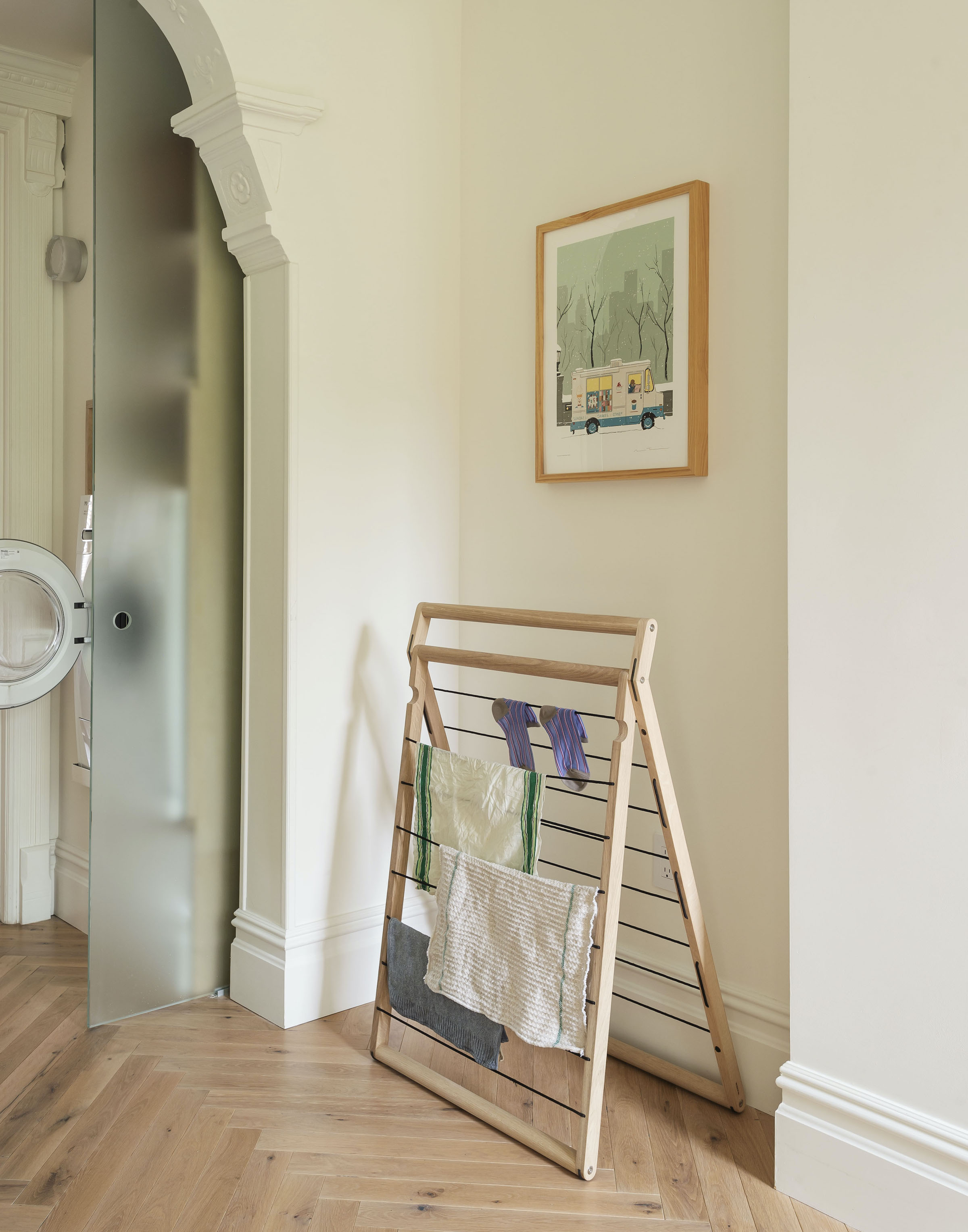 Above: Skagerak’s portable oak Dryp drying rack folds flat when not in use.
Above: Skagerak’s portable oak Dryp drying rack folds flat when not in use.
Under-Stair Storage
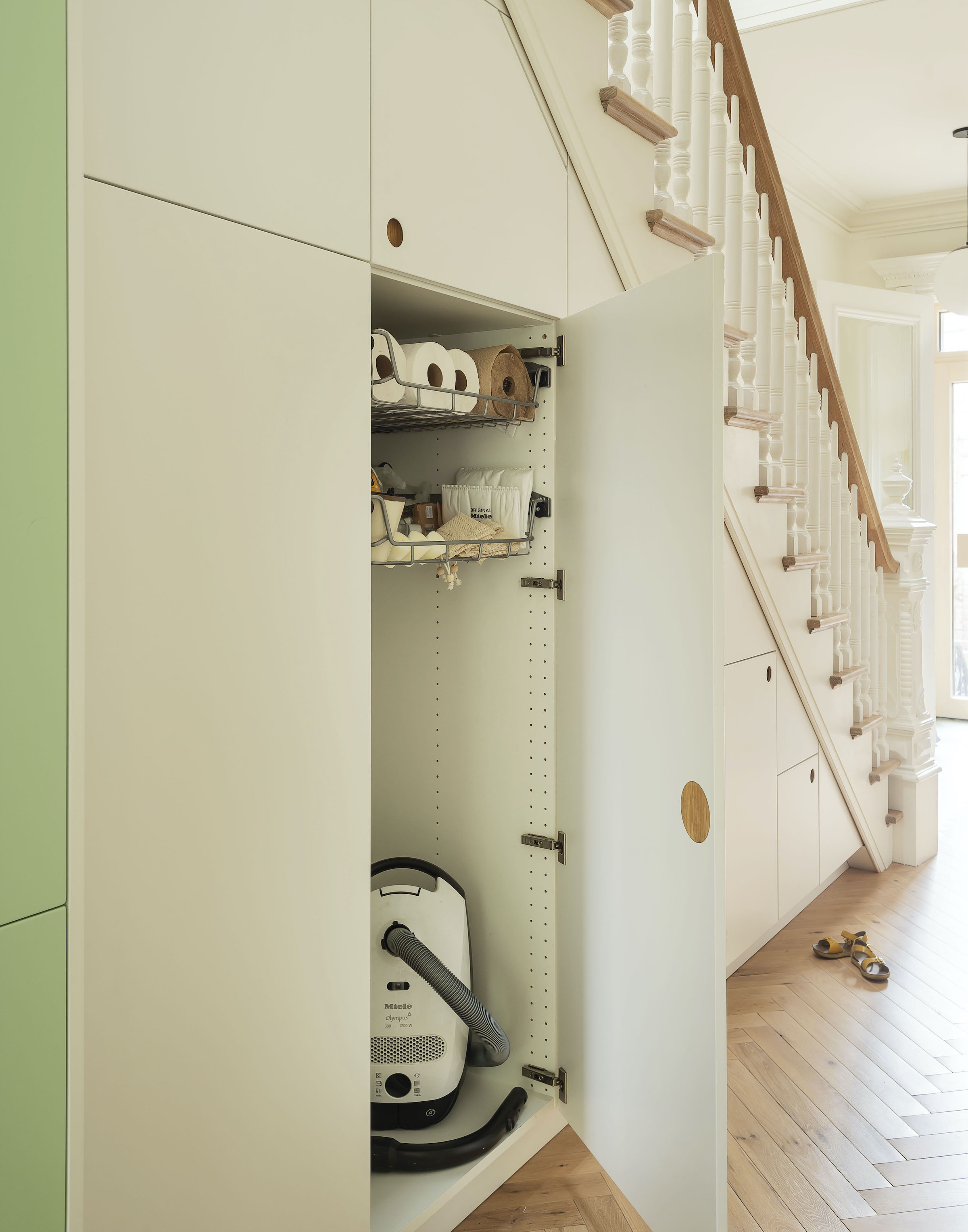 Above: Closets occupy what had been a stair down to the garden level, which the architects turned into a separate rental apartment with its own entrance. “Since a connection between the two units was no longer needed, we used the space for storage,” says Ruth. As in the kitchen, the cabinets are made from Ikea skeletons with Reform Basis line fronts.
Above: Closets occupy what had been a stair down to the garden level, which the architects turned into a separate rental apartment with its own entrance. “Since a connection between the two units was no longer needed, we used the space for storage,” says Ruth. As in the kitchen, the cabinets are made from Ikea skeletons with Reform Basis line fronts.
Postage Stamp Powder Room
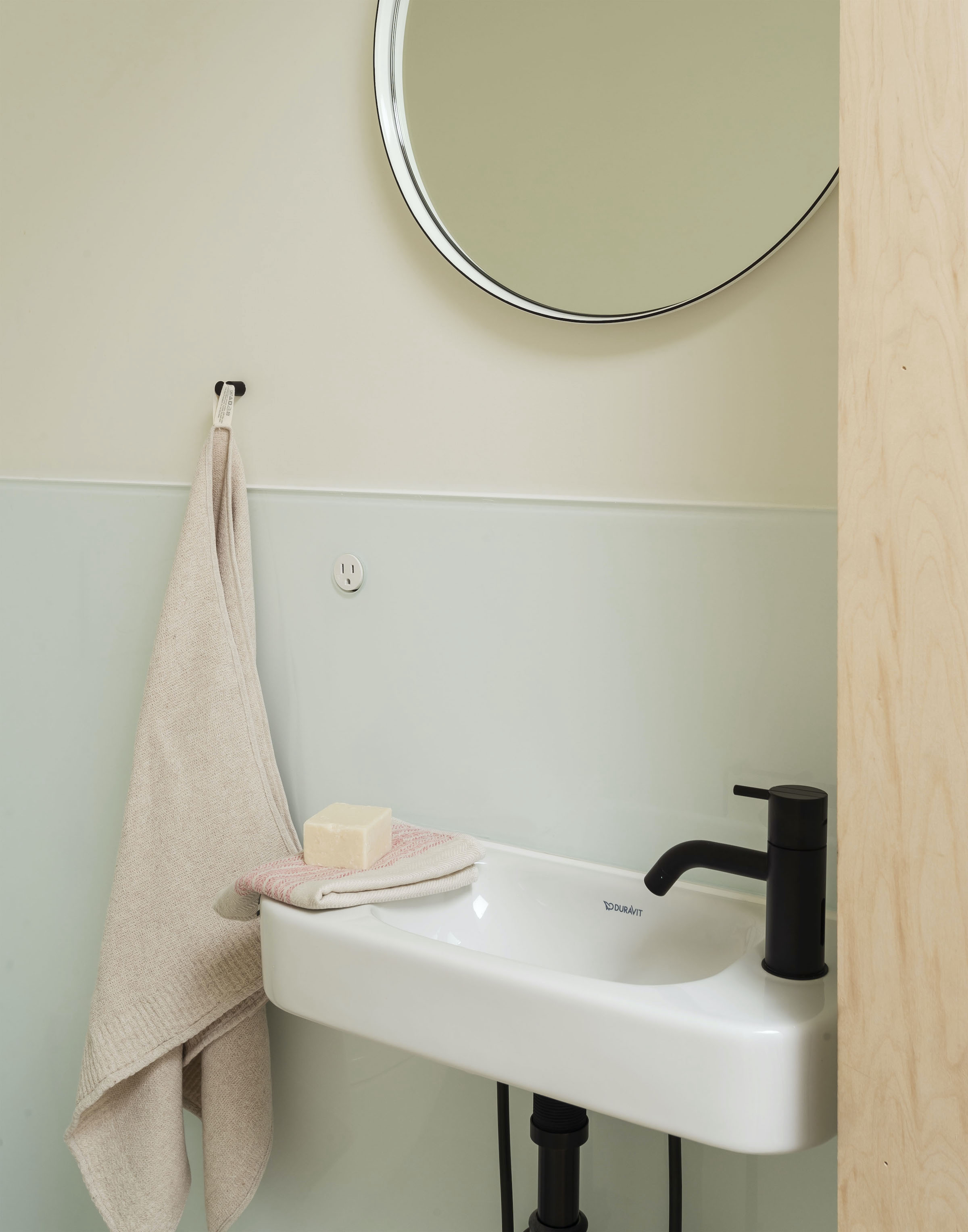 Above: A narrow powder room is tucked opposite the stair; it was fitted into in the same interstitial space as the laundry area. It has a glass wainscot, a Duravit Happy D.2 sink, and Vola faucet.
Above: A narrow powder room is tucked opposite the stair; it was fitted into in the same interstitial space as the laundry area. It has a glass wainscot, a Duravit Happy D.2 sink, and Vola faucet.
Before
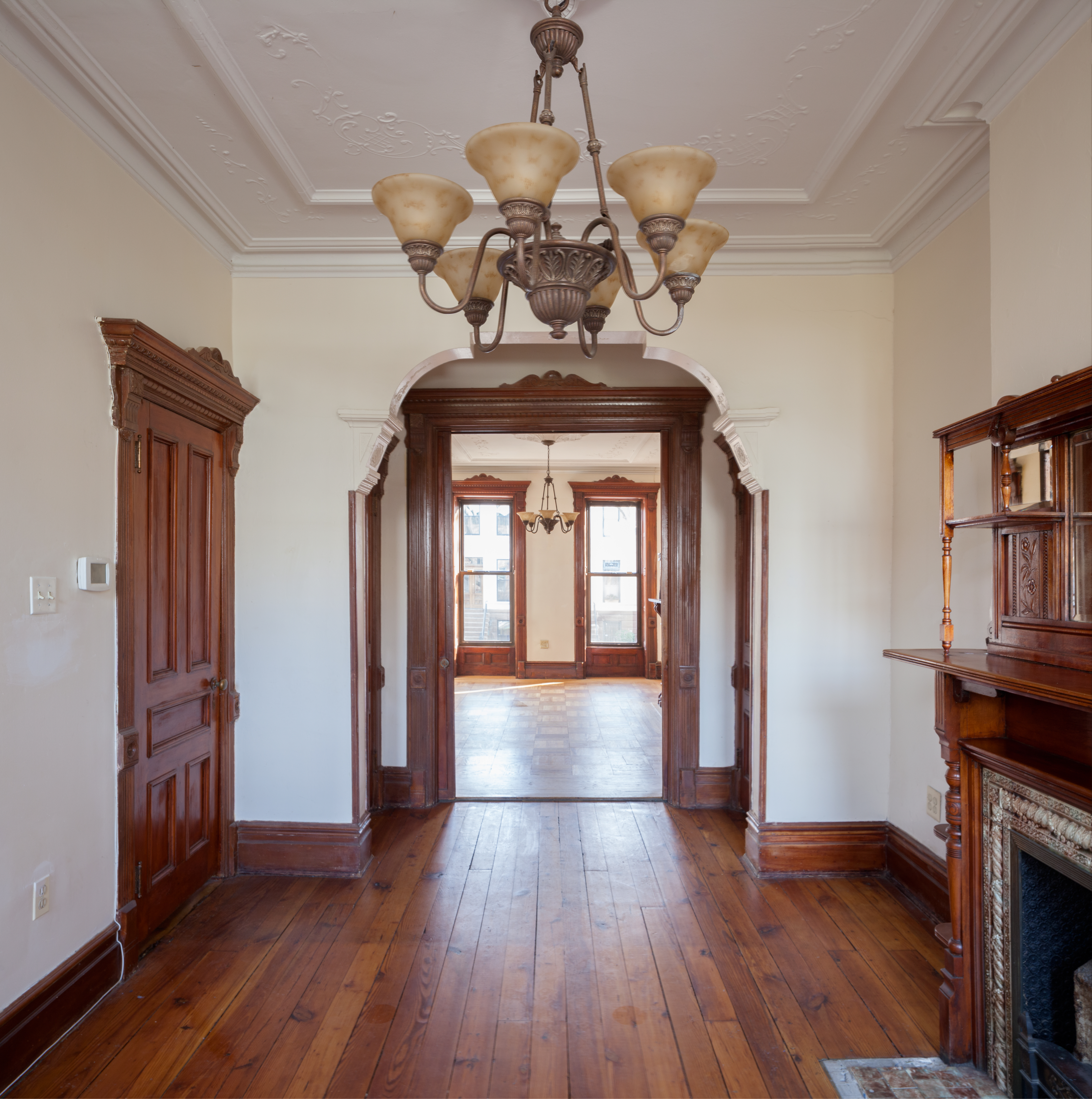 Above: A view from the former dining room—now the kitchen and laundry–looking into the front parlor. Photograph by Peter Dressel, courtesy of CO-Adaptive.
Above: A view from the former dining room—now the kitchen and laundry–looking into the front parlor. Photograph by Peter Dressel, courtesy of CO-Adaptive.
Floor Plan
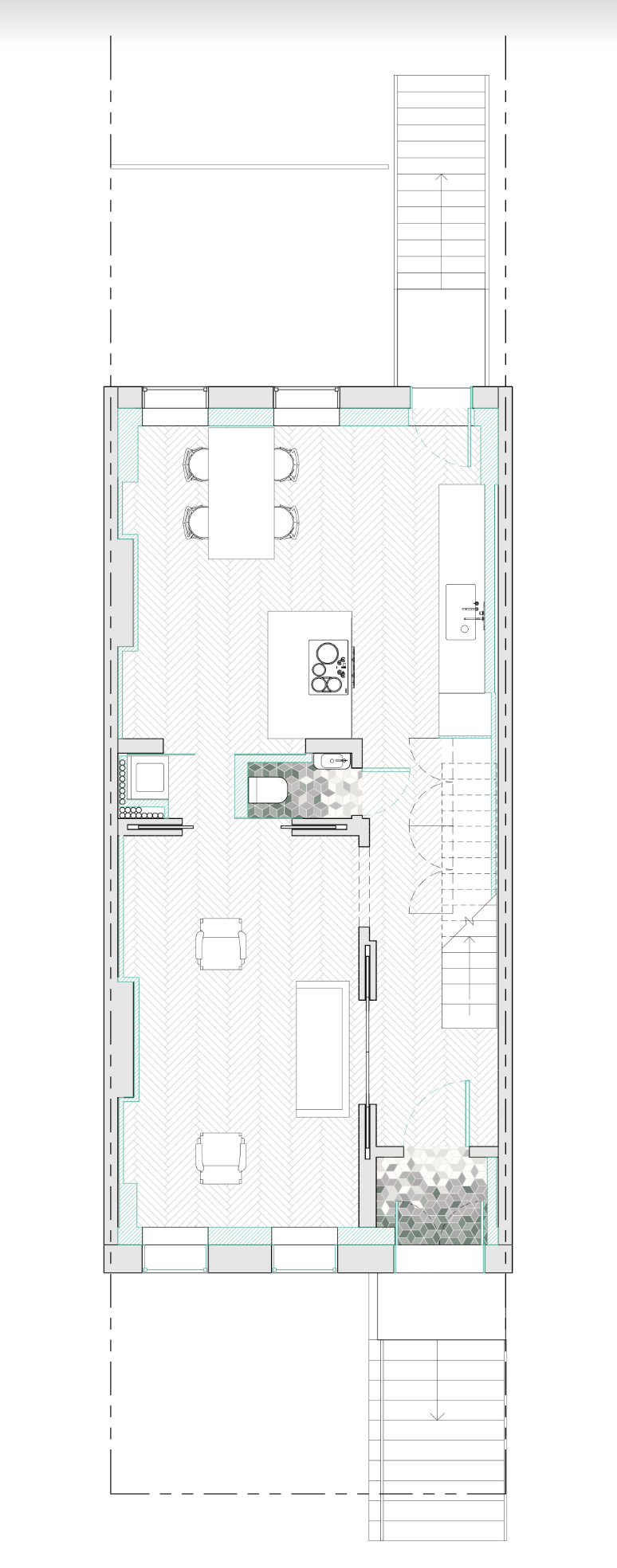 Above: The architects were able to make the most of the sliver of divider space between living room and kitchen. “The powder room works,” explains Ruth, “because we tucked the small sink into a nook towards the kitchen, leaving about 31 inches wide by 50 inches deep of space.”
Above: The architects were able to make the most of the sliver of divider space between living room and kitchen. “The powder room works,” explains Ruth, “because we tucked the small sink into a nook towards the kitchen, leaving about 31 inches wide by 50 inches deep of space.”
See more CO-Adaptive designs and green building on page 174-181 and page 304 of Remodelista: The Low-Impact Home.
Also:

